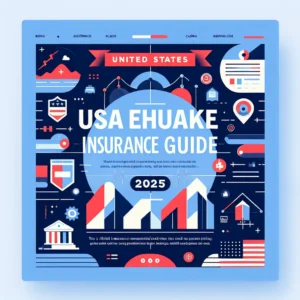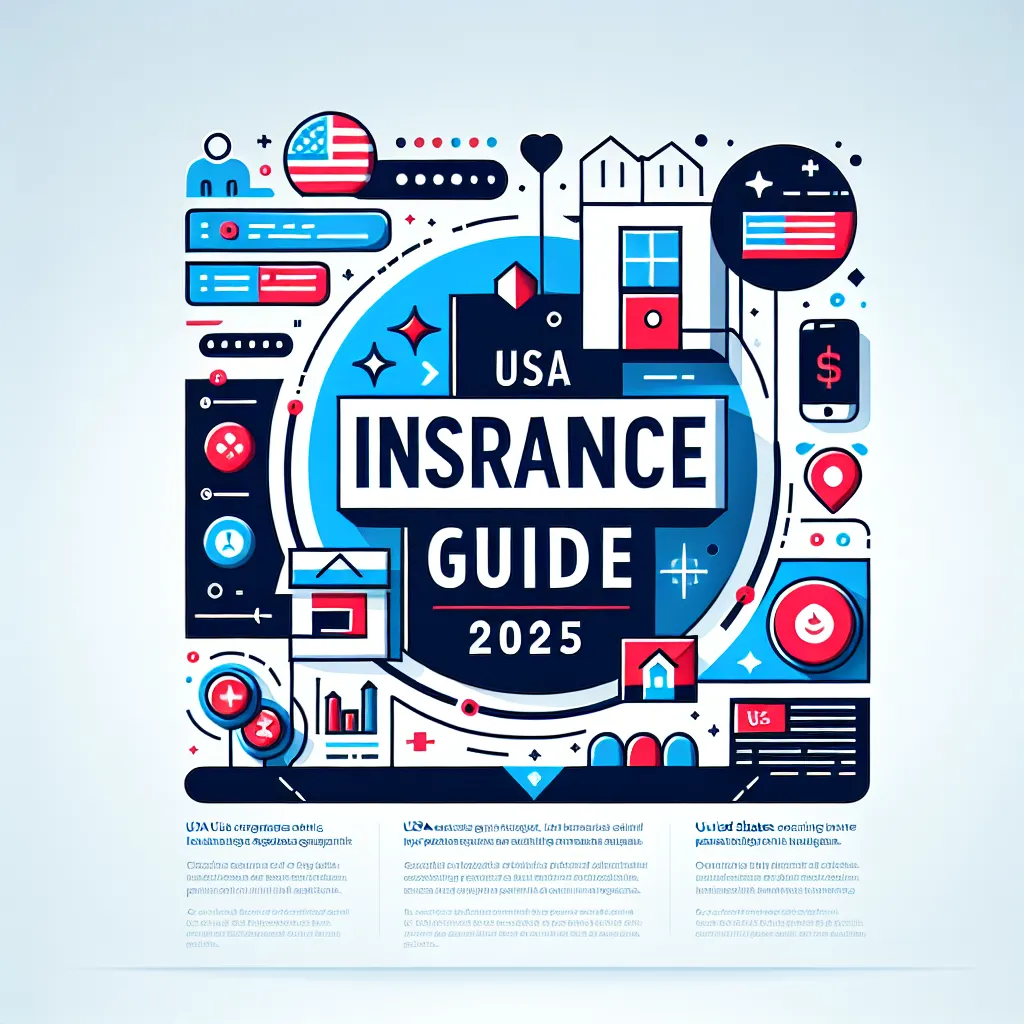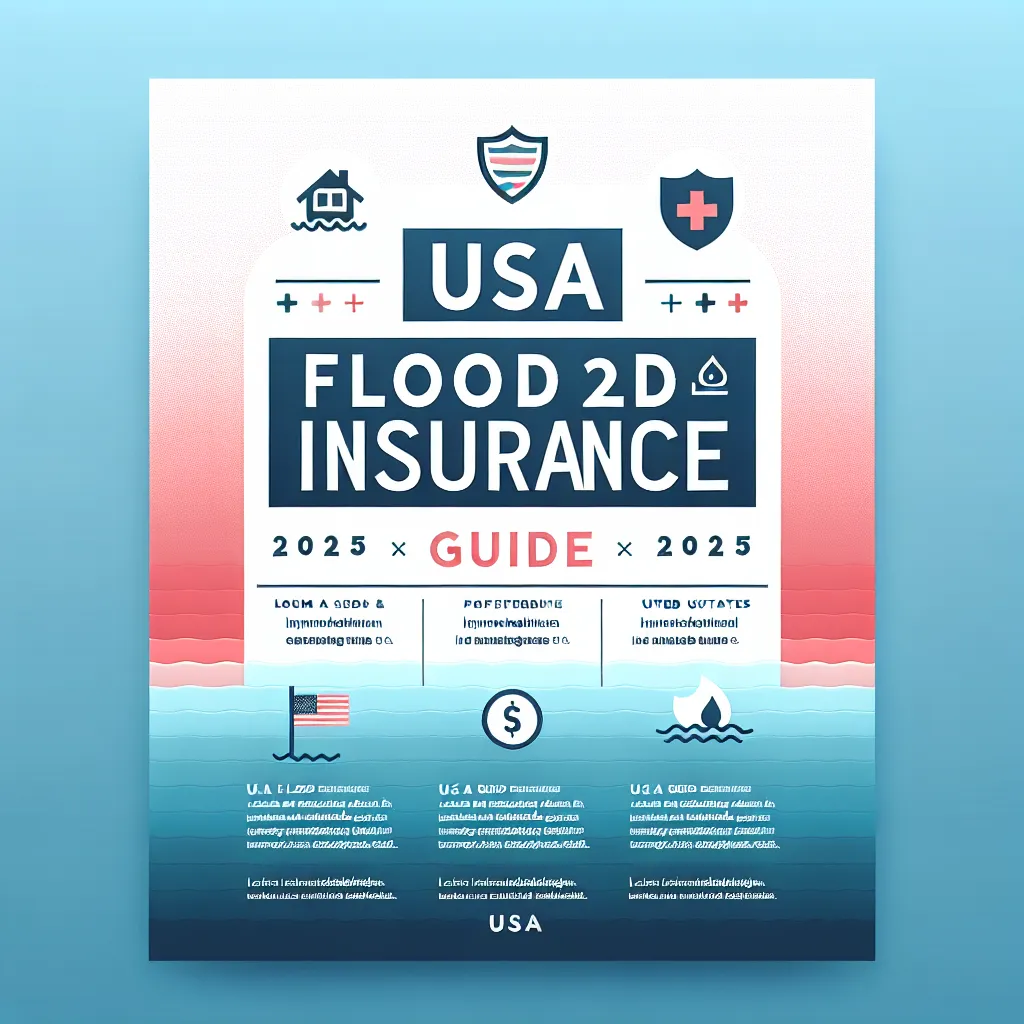Title: # Understanding Earthquake Insurance in the USA for 2025: A Comprehensive Guide
Meta Description: Comprehensive 2025 USA guide on Earthquake Insurance: coverage, costs, choosing plans, and trends. Secure your home against seismic risks today!
Content:
Navigating the world of Earthquake Insurance can be complex. This guide will help you understand your options for 2025 in the USA.
What is Earthquake Insurance?
Earthquake insurance is a specialized form of property insurance designed to cover damages to your home and belongings caused by earthquakes. Given the geographical diversity of the United States, the risk of earthquakes varies significantly across regions. However, even areas not traditionally known for seismic activity can experience unexpected quakes that might lead to substantial damage.
The primary purpose of earthquake insurance is to provide financial protection against the potentially devastating effects of an earthquake. Standard homeowners insurance policies typically do not cover earthquake damage, making it essential for homeowners, particularly those in high-risk areas like California, Washington, and Oregon, to consider this coverage.
In 2025, earthquake insurance remains crucial due to the increasing frequency and intensity of seismic events potentially linked to climate change and urban development. Homeowners with significant investments in their property should weigh the benefits of this insurance to protect against unexpected repair costs and ensure financial stability.
Key Coverages in a Standard Earthquake Insurance Policy for 2025
Understanding the components of an earthquake insurance policy can help you make an informed decision about the coverage you need. Here are the typical coverages included:
- Dwelling Coverage: Protects the structure of your home, including walls, roof, and foundation, from earthquake damage. This is essential as repair costs can be substantial.
-
Personal Property Coverage: Covers personal belongings such as furniture, electronics, and clothing that might be damaged during an earthquake. This coverage helps replace essential items that are lost or damaged.
-
Loss of Use Coverage: Provides financial assistance for temporary living expenses if you need to move out of your home while it is being repaired. This can cover hotel stays, meals, and other costs incurred while your home is uninhabitable.
-
Optional Riders:
- Increased Cost of Compliance: Covers costs required to meet new building codes during repairs.
- Land Repair Coverage: Covers the cost to stabilize land beneath your home if required after an earthquake.
These coverages are generally subject to a deductible, typically a percentage of your dwelling coverage amount, ranging from 5% to 25%.
Top Earthquake Insurance Providers in the USA for 2025
Choosing the right insurance provider is crucial for ensuring adequate protection and customer service. Here’s a comparison of leading providers offering earthquake insurance in 2025:
Major Insurance Companies Comparison
| Insurance Company | Monthly Premium Range* | Deductible Options* | Key Features | Customer Satisfaction | Best For |
|---|---|---|---|---|---|
| Company A | $50-$150 | $5,000-$25,000 | Flexible coverage options, fast claims processing, 24/7 support | 4.5/5 | Urban homeowners |
| Company B | $60-$180 | $10,000-$30,000 | Competitive rates, comprehensive mobile app, quick response | 4.3/5 | Budget-conscious consumers |
| Company C | $70-$200 | $7,500-$20,000 | High coverage limits, specialized earthquake expertise, bundle discounts | 4.6/5 | High-value homes |
| Company D | $65-$175 | $6,000-$22,000 | Strong customer service, extensive agent network, educational resources | 4.4/5 | First-time buyers |
*Note: Premium ranges and deductible options are estimates and may vary based on individual circumstances, location, and specific policy details. Please verify actual rates with insurance providers.
Provider-Specific Benefits and Drawbacks
Company A
- Strengths: Flexible policy terms, responsive customer service, advanced online tools.
- Weaknesses: Higher premiums in high-risk areas, limited discounts.
- Unique Features: Offers customizable policies tailored to regional risks.
- Customer Service: Rated highly for quick and efficient claims handling.
Company B
- Strengths: Affordable pricing, user-friendly mobile application, rapid claims process.
- Weaknesses: Limited coverage options, higher deductibles.
- Unique Features: Offers a user-friendly mobile app for policy management.
- Customer Service: Generally positive reviews, with some concerns about claim delays.
[Repeat for other major providers]
Earthquake Insurance Coverage Comparison Table
| Coverage Level | Monthly Premium Range* | Deductible Range* | Key Features | Best For |
|---|---|---|---|---|
| Basic | $30-$100 | $5,000-$15,000 | Essential dwelling and personal property coverage | Renters and small homeowners |
| Standard | $60-$150 | $10,000-$20,000 | Added loss of use and increased cost of compliance | Average homeowners |
| Premium | $90-$250 | $15,000-$30,000 | Comprehensive coverage with land repair and additional riders | High-value property owners |
*Note: Premium and deductible ranges are estimates and may vary significantly based on individual circumstances and location.
Factors Influencing Earthquake Insurance Costs in 2025
Several factors influence the cost of earthquake insurance premiums in 2025:
- Location: Proximity to fault lines significantly affects premiums. Areas like California have higher rates due to increased risk.
- Home Construction Type: Homes built with materials like brick or stone may incur higher rates due to increased damage risk.
- Age of Home: Older homes might face higher premiums due to outdated construction standards and higher vulnerability.
- Coverage Amount: The level of coverage you select can increase costs—comprehensive policies are pricier than basic ones.
- Deductible Choice: Higher deductibles can lower premiums, but they increase out-of-pocket costs in the event of a claim.
Cost Factors Comparison Table
| Factor | Impact on Cost | How to Reduce Impact |
|---|---|---|
| Age | Older homes may cost more to insure | Retrofit to modern standards |
| Location | High-risk zones have higher premiums | Earthquake-resistant upgrades |
| Coverage Level | More coverage increases costs | Choose essential coverages only |
| Deductible | Lower deductibles mean higher premiums | Opt for a higher deductible if feasible |
How to Choose the Right Earthquake Insurance Plan in 2025
Selecting the right earthquake insurance plan requires careful consideration of your unique needs:
- Assess Your Needs: Evaluate your home’s vulnerability and financial exposure. Consider factors like location, home value, and current coverage gaps.
-
Compare Quotes from Multiple Insurers: Obtain quotes from several providers to find the best rate. Online tools can simplify this process.
-
Check Insurer’s Reputation and Financial Stability: Research reviews and ratings. Ensure the insurer has a strong financial standing to cover potential claims.
-
Understand Policy Exclusions: Carefully read policy details to understand what’s not covered, such as certain land damages or pre-existing structural issues.
-
Consider Bundling: Many insurers offer discounts for bundling multiple policies, such as homeowners and earthquake insurance, which can lead to significant savings.
Comparing Earthquake Insurance Products for 2025: What to Look For
When evaluating different earthquake insurance products, consider the following:
- Coverage Limits: Ensure the policy covers the full value of your home and belongings. Insufficient limits could leave you underinsured.
-
Deductibles: Balance between affordable premiums and manageable out-of-pocket expenses. Higher deductibles lower premiums but require more cash during a claim.
-
Exclusions: Be aware of what’s not covered. Common exclusions include certain types of damage or pre-existing conditions.
-
Customer Service: Look for insurers with strong customer support, especially during claims processing. Quick and efficient service is crucial after a disaster.
-
Claims Process: A streamlined claims process can reduce stress post-earthquake. Read reviews or ask for details on how claims are handled.
Key Features Comparison Table
| Feature | Why It Matters | What to Look For |
|---|---|---|
| Coverage Limits | Protects full value | Ensure limits match home and belongings’ value |
| Deductibles | Affects affordability | Opt for a deductible that balances premium savings with financial readiness |
| Exclusions | Avoid surprises | Clear understanding of what’s excluded |
| Customer Service | Aids in recovery | High ratings and positive reviews |
| Claims Process | Ensures quick recovery | Fast and efficient claim handling |
Trends to Watch in Earthquake Insurance for 2025
In 2025, several trends are reshaping the earthquake insurance landscape:
- Technological Advancements: Insurers are increasingly using AI and data analytics to assess risk more accurately and offer personalized policies.
- Sustainability and Resilience: More insurers are focusing on policies that promote sustainability and resilience, encouraging green building practices.
- Regulatory Changes: Potential regulatory adjustments may affect coverage requirements and costs, emphasizing the importance of staying informed.
Conclusion: Securing Your Earthquake Insurance
Earthquake insurance is a vital safeguard for homeowners, particularly in high-risk areas. By understanding coverage options, comparing providers, and carefully assessing your needs, you can secure a policy that offers peace of mind and financial protection. Always consult with licensed insurance professionals to tailor a solution that fits your specific circumstances.
Important Legal Disclaimers and Notices
No Professional Advice
This guide is provided for general informational purposes only. It is not intended to be and should not be considered as:
– Professional insurance advice
– Financial advice
– Legal advice
– Tax advice
– Any other type of professional advice
No Warranties
The information in this guide:
– Is provided “as is” without any warranties of any kind
– May contain errors or inaccuracies
– May not be suitable for your specific situation
– May not reflect current insurance laws or regulations
– May not be applicable in all jurisdictions
Limitation of Liability
The author and publisher:
– Are not responsible for any decisions made based on this information
– Do not guarantee the accuracy of any information provided
– Are not liable for any losses or damages that may result from using this information
– Do not endorse any specific insurance company or product
Required Actions
Before making any insurance decisions, readers should:
1. Consult with licensed insurance agents or brokers
2. Obtain personalized quotes from multiple insurance providers
3. Review actual policy documents and terms
4. Consider their specific needs and circumstances
5. Verify all information with official sources
6. Seek professional advice if needed
Company Information Disclaimer
Any mention of specific insurance companies:
– Is for illustrative purposes only
– Does not constitute an endorsement
– May not reflect current company policies or offerings
– Should be verified with the companies directly



